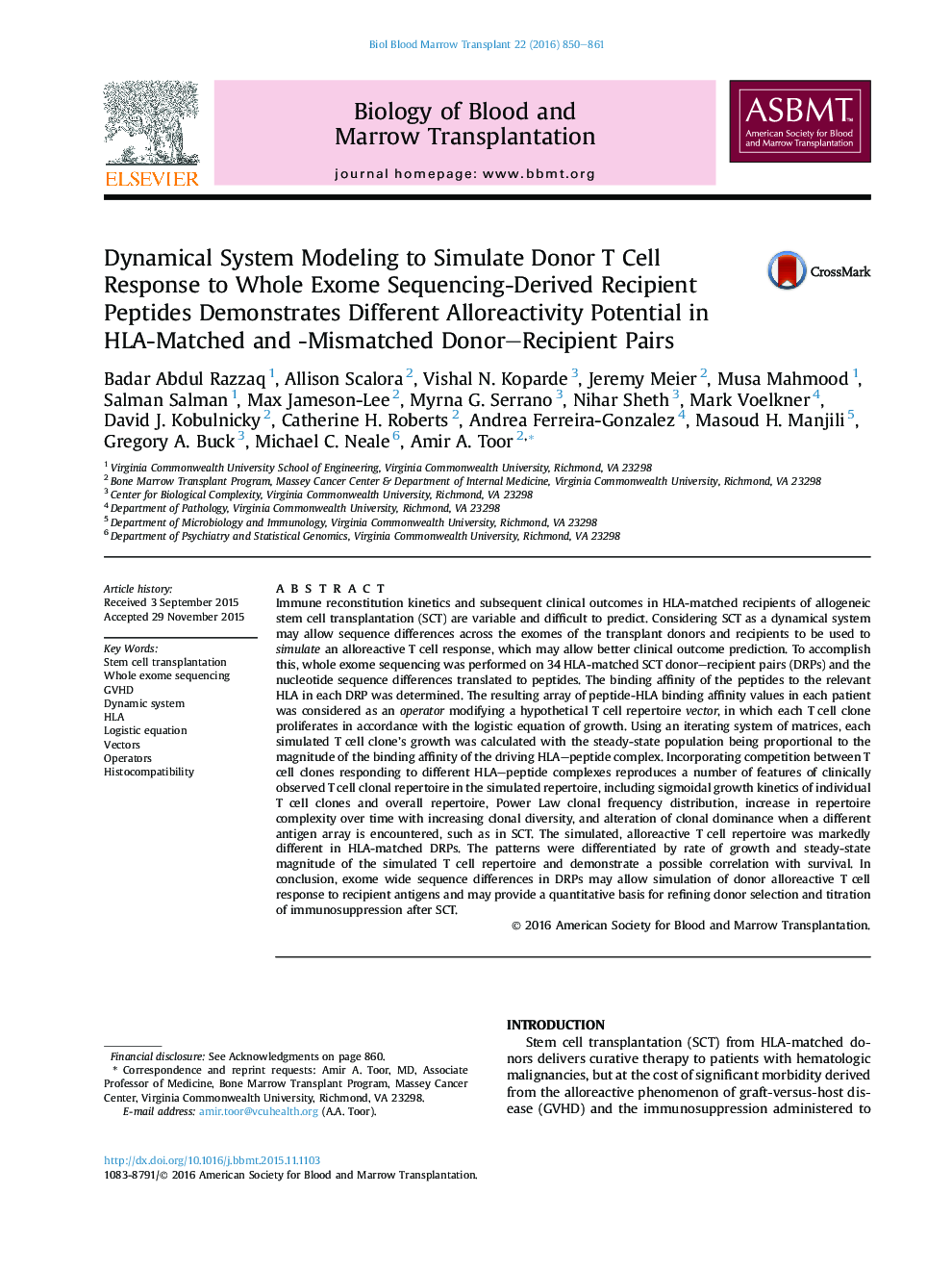| کد مقاله | کد نشریه | سال انتشار | مقاله انگلیسی | نسخه تمام متن |
|---|---|---|---|---|
| 2101483 | 1546254 | 2016 | 12 صفحه PDF | دانلود رایگان |

• Exome sequencing may predict alloreactive donor T cell response using matrix mathematics.
• HLA-matched transplant donor–recipient pairs may exhibit different alloreactive T cell responses.
Immune reconstitution kinetics and subsequent clinical outcomes in HLA-matched recipients of allogeneic stem cell transplantation (SCT) are variable and difficult to predict. Considering SCT as a dynamical system may allow sequence differences across the exomes of the transplant donors and recipients to be used to simulate an alloreactive T cell response, which may allow better clinical outcome prediction. To accomplish this, whole exome sequencing was performed on 34 HLA-matched SCT donor–recipient pairs (DRPs) and the nucleotide sequence differences translated to peptides. The binding affinity of the peptides to the relevant HLA in each DRP was determined. The resulting array of peptide-HLA binding affinity values in each patient was considered as an operator modifying a hypothetical T cell repertoire vector, in which each T cell clone proliferates in accordance with the logistic equation of growth. Using an iterating system of matrices, each simulated T cell clone's growth was calculated with the steady-state population being proportional to the magnitude of the binding affinity of the driving HLA–peptide complex. Incorporating competition between T cell clones responding to different HLA–peptide complexes reproduces a number of features of clinically observed T cell clonal repertoire in the simulated repertoire, including sigmoidal growth kinetics of individual T cell clones and overall repertoire, Power Law clonal frequency distribution, increase in repertoire complexity over time with increasing clonal diversity, and alteration of clonal dominance when a different antigen array is encountered, such as in SCT. The simulated, alloreactive T cell repertoire was markedly different in HLA-matched DRPs. The patterns were differentiated by rate of growth and steady-state magnitude of the simulated T cell repertoire and demonstrate a possible correlation with survival. In conclusion, exome wide sequence differences in DRPs may allow simulation of donor alloreactive T cell response to recipient antigens and may provide a quantitative basis for refining donor selection and titration of immunosuppression after SCT.
Graphical AbstractRecipient Antigens (miHA–HLA Complexes) in Aggregate Shape the Donor T Cell Repertoire Through Iteration and FeedbackFigure optionsDownload high-quality image (131 K)Download as PowerPoint slide
Journal: - Volume 22, Issue 5, May 2016, Pages 850–861